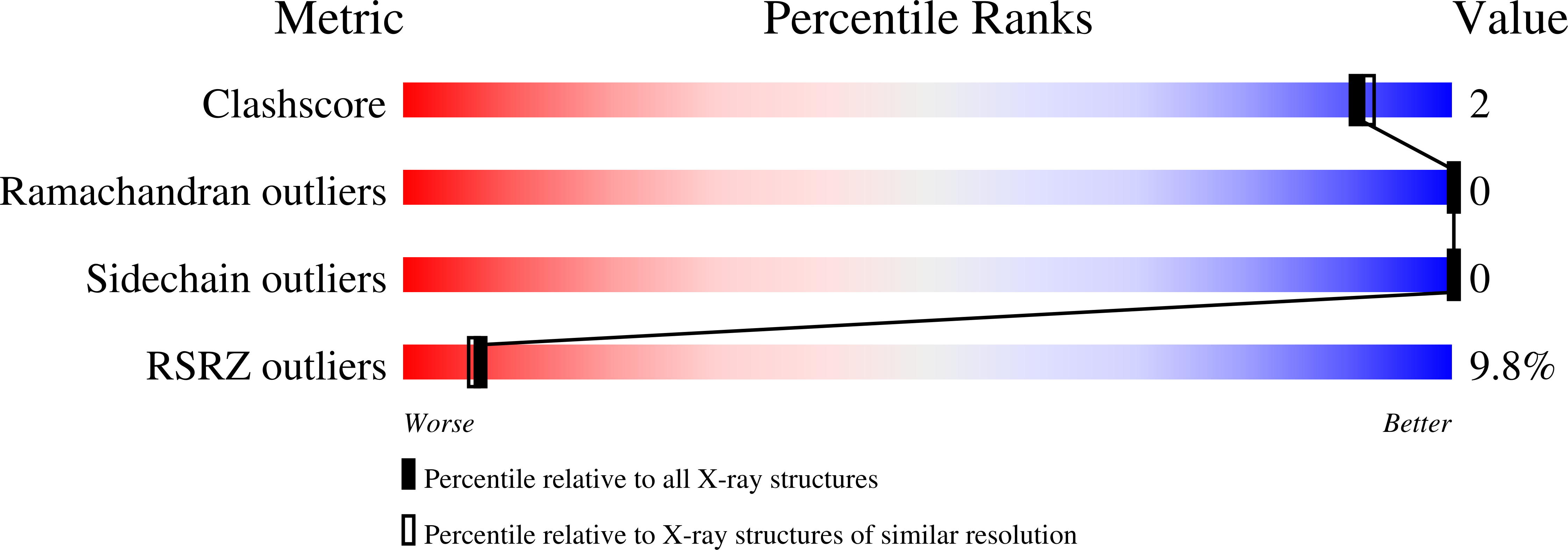Development of a tetrameric streptavidin mutein with reversible biotin binding capability: engineering a mobile loop as an exit door for biotin.
O'Sullivan, V.J., Barrette-Ng, I., Hommema, E., Hermanson, G.T., Schofield, M., Wu, S.C., Honetschlaeger, C., Ng, K.K., Wong, S.L.(2012) PLoS One 7: e35203-e35203
- PubMed: 22536357
- DOI: https://doi.org/10.1371/journal.pone.0035203
- Primary Citation of Related Structures:
4EKV - PubMed Abstract:
A novel form of tetrameric streptavidin has been engineered to have reversible biotin binding capability. In wild-type streptavidin, loop(3-4) functions as a lid for the entry and exit of biotin. When biotin is bound, interactions between biotin and key residues in loop(3-4) keep this lid in the closed state. In the engineered mutein, a second biotin exit door is created by changing the amino acid sequence of loop(7-8). This door is mobile even in the presence of the bound biotin and can facilitate the release of biotin from the mutein. Since loop(7-8) is involved in subunit interactions, alteration of this loop in the engineered mutein results in an 11° rotation between the two dimers in reference to wild-type streptavidin. The tetrameric state of the engineered mutein is stabilized by a H127C mutation, which leads to the formation of inter-subunit disulfide bonds. The biotin binding kinetic parameters (k(off) of 4.28×10(-4) s(-1) and K(d) of 1.9×10(-8) M) make this engineered mutein a superb affinity agent for the purification of biotinylated biomolecules. Affinity matrices can be regenerated using gentle procedures, and regenerated matrices can be reused at least ten times without any observable reduction in binding capacity. With the combination of both the engineered mutein and wild-type streptavidin, biotinylated biomolecules can easily be affinity purified to high purity and immobilized to desirable platforms without any leakage concerns. Other potential biotechnological applications, such as development of an automated high-throughput protein purification system, are feasible.
Organizational Affiliation:
Thermo Fisher Scientific, Inc., Pierce Protein Research, Rockford, Illinois, United States of America.
















